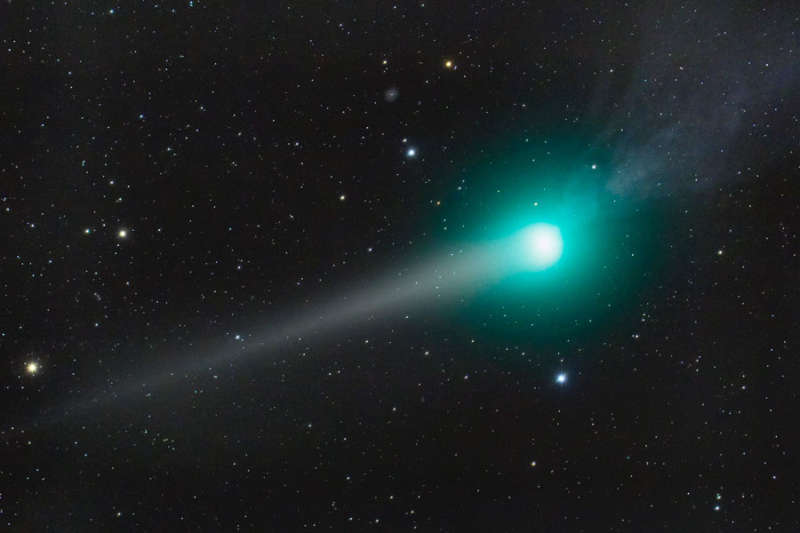Credit & Copyright: Richard Richins
(NMSU)
Explanation:
Go outside tonight and see Comet Lulin.
From a dark location, you should need only a
good
star
map and
admirable
perseverance --
although wide-field binoculars might help.
Yesterday,
Comet Lulin passed its closest to Earth, so that the comet will remain near its brightest over the next few days.
The comet is currently almost 180 degrees around from the Sun and
so visible nearly all night long, but will appear to
move on the sky
about 10 full moons a night.
Pictured above,
Comet Lulin was captured in
spectacular form two nights ago from New Mexico, USA.
The central coma of the comet is appearing quite green, a color likely indicating
glowing
cyanogen and molecular
carbon gasses.
Bright stars and a distant
spiral galaxy
are clearly visible in the image background.
The yellow dust tail, reflecting sunlight, is
visible sprawling to the coma's left trailing behind
the comet, while the textured bluish-glowing ion tail is visible to the coma's
right, pointing away from the Sun.
Over the past few weeks, from the current vantage point of Earth, these
two tails appeared to point in opposite directions.
Comet Lulin is expected to slowly fade over the next few weeks.
1999 2000 2001 2002 2003 2004 2005 2006 2007 2008 2009 2010 2011 2012 2013 2014 2015 2016 2017 2018 2019 2020 2021 2022 2023 2024 2025 |
Январь Февраль Март Апрель Май Июнь Июль Август Сентябрь Октябрь Ноябрь Декабрь |
NASA Web Site Statements, Warnings, and Disclaimers
NASA Official: Jay Norris. Specific rights apply.
A service of: LHEA at NASA / GSFC
& Michigan Tech. U.
|
Публикации с ключевыми словами:
comet - comet tail - кометы - кометные хвосты
Публикации со словами: comet - comet tail - кометы - кометные хвосты | |
См. также:
Все публикации на ту же тему >> | |
